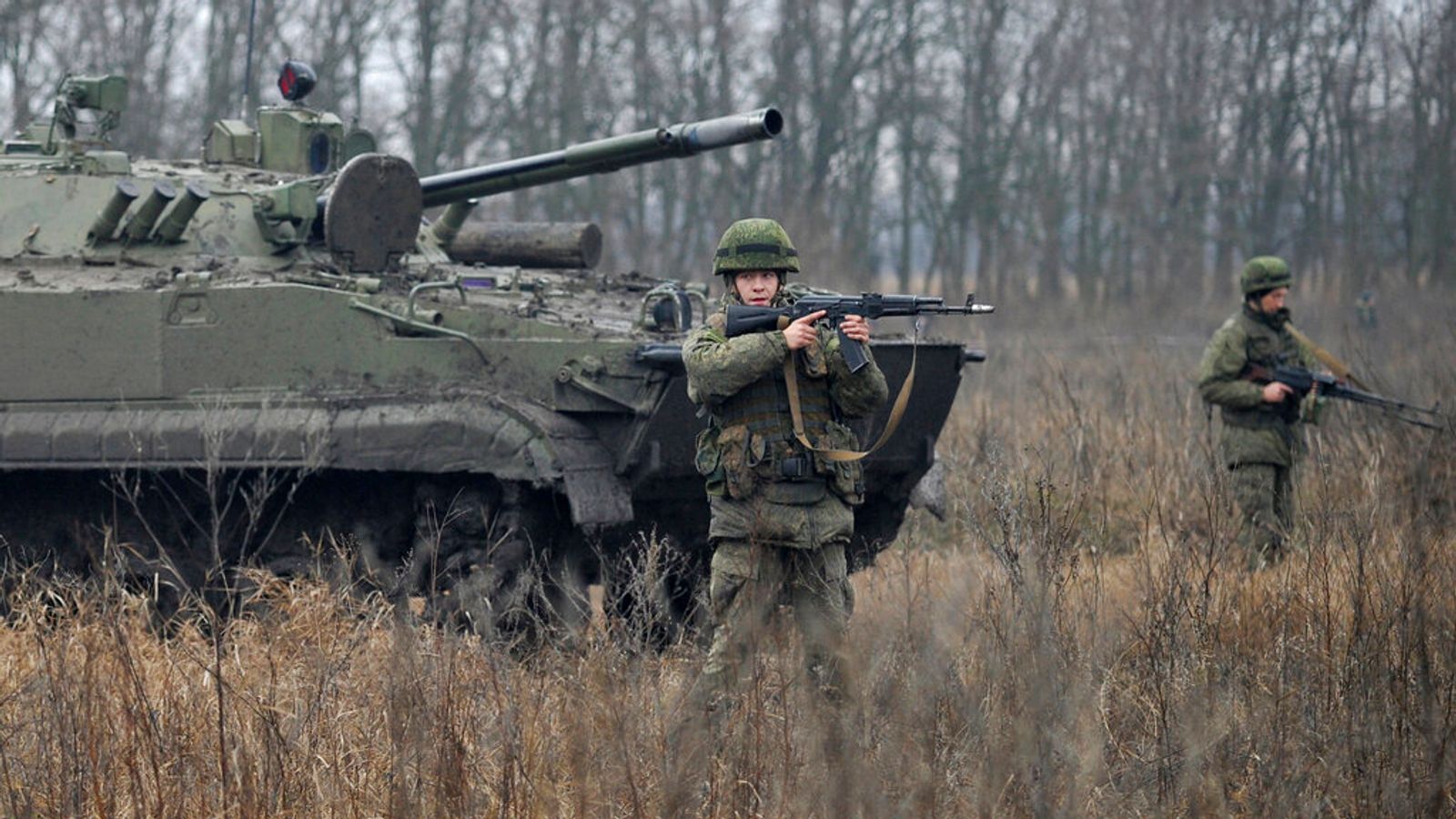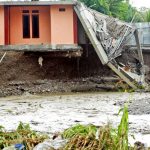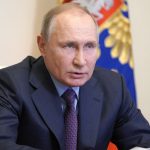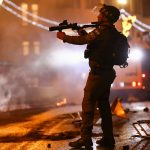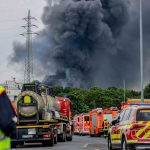The risk of new conflict in Ukraine is real.
That was the warning from Jens Stoltenberg, the head of the NATO alliance, which is braced for the possibility of a further Russian invasion of the vast eastern European state.
Around 100,000 Russian troops – combat-ready and equipped with artillery, medical supplies and jamming devices to disrupt enemy communications – remain close to Ukraine’s border despite weeks of increasingly loud calls from Western capitals to de-escalate.
Instead, Russian President Vladimir Putin has made seemingly impossible demands of his democratic rivals to reduce their military footprint in eastern and central Europe and give a guarantee not to allow Ukraine to become a member of the NATO club.
Ukraine’s growing reserve army ‘getting ready’ amid fears of Russian attack
It makes this crisis not just about the future of Ukraine but about the security of the whole of Europe and the wider democratic world.
No one seems to believe rare talks this week between Russia and the United States and then between Moscow and all 30 NATO allies will immediately defuse the crisis.
Russian submarines threatening undersea network of internet cables, says UK defence chief Sir Tony Radakin
Vladimir Putin reinforces notion of ‘Fortress Russia’ as he takes aim at NATO
Russia sets out list of demands from NATO in draft security deal
But a key indicator as to whether the standoff explodes into wider war or can yet be pulled back from the brink will be whether the Kremlin is genuinely seeking dialogue or is simply going through the motions.
A fear among western diplomats is that President Putin intends for the talks to fail to create a pretext for war, eight years on from his annexation of Crimea and the backing of an insurgency in eastern Ukraine.
If that is the case, then Ukrainian officials believe further military action against them is all but inevitable as to back down without anything to show for it would make him look weak.
One source said he expected any Russian attack to be intense but limited – with the Kremlin seeking to make new gains before agreeing to negotiate a ceasefire.
In trying to understand his calculations, a Western military expert also pointed to President Putin’s age – at 69 he will not be in power forever – and the fact that he faces an unusually weak West.
The US administration is still bruised following a messy pull-out from Afghanistan, Germany has a new, untested government, France is preparing for presidential elections and everyone is simultaneously dealing with the COVID pandemic.
This combination of factors could motivate Russia’s president to take greater risk on Ukraine as he thinks about his legacy, the military expert said.
Please use Chrome browser for a more accessible video player
The United States and other NATO allies have said they would not send troops to support Ukraine in the event of a further invasion because it is not a member state.
But they are drawing up plans to increase the number of troops deployed on the alliance’s eastern flank to bolster its defences – a move that would likely be seen by Russia as aggressive.
Such reinforcements could also increase the risk of a mistake or a miscalculation by either side that would place NATO and Russia one-step closer to a direct confrontation.
The unpredictability and the high-stakes are why this crisis is of such grave concern among western leaders.
It is also why Ukrainian ministers have warned that a new conflict in their country could be the spark that ignites World War Three.
